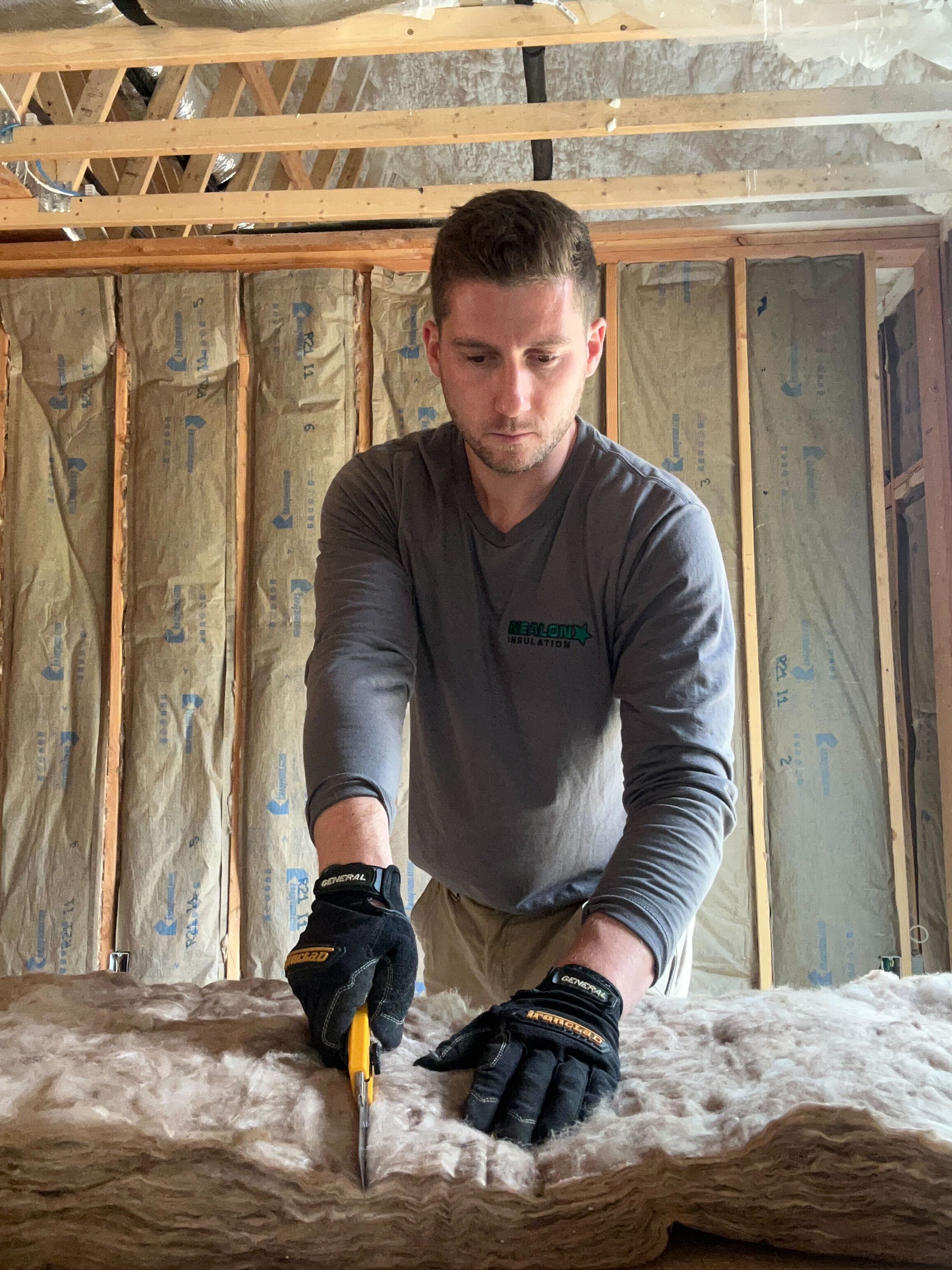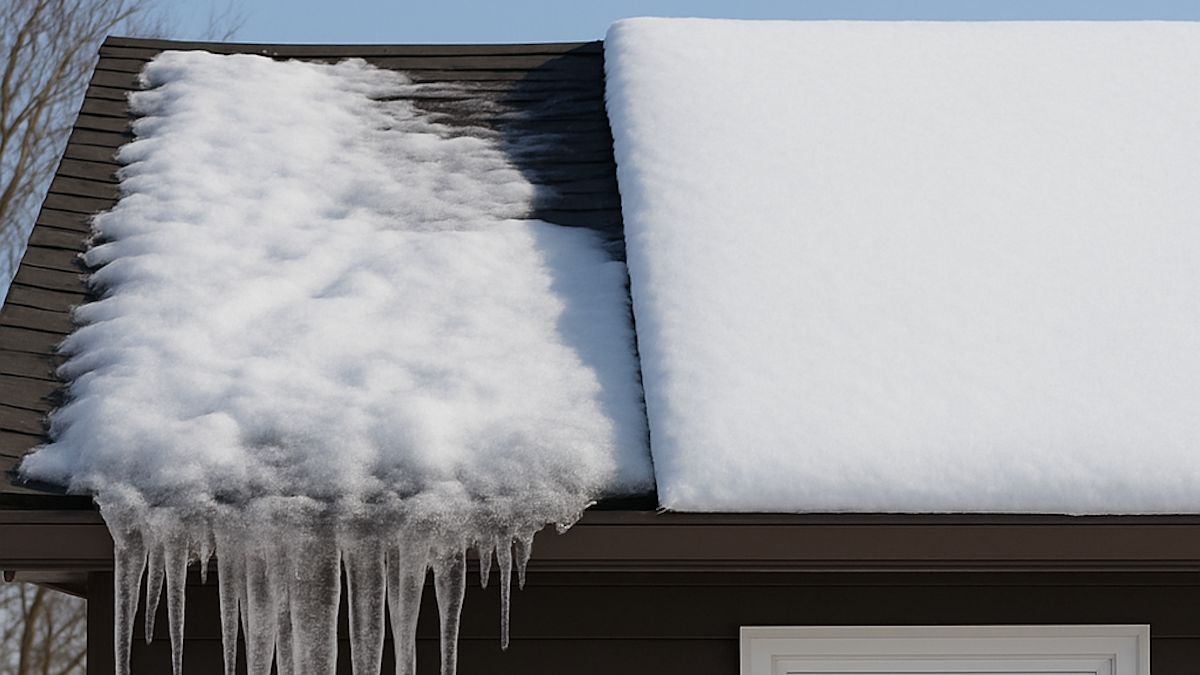Why Spray Foam Rim Joists?

If your house was a winter coat, the rim joist would be the spot where the wind sneaks in because someone forgot to zip the zipper all the way up. It’s that band of wood sitting on top of your foundation, running around the whole perimeter of the house. Builders often leave it with nothing more than a prayer and a layer of fiberglass—basically like stuffing a napkin in the gap under your front door and calling it “sealed.”
Here’s the truth: rim joists are one of the biggest weak spots in a home’s insulation system. They let in cold drafts, create sweaty condensation in the summer, and are a VIP entrance for mold. Spray foam fixes that by doing what fiberglass and foam board can’t: it seals, insulates, prevents pests and blocks moisture in one go.
So if you’ve ever wondered why your basement feels like an icebox or why your floors upstairs stay chilly no matter how high you crank the thermostat—this little strip of wood could be the culprit. And spray foam? That’s the fix.
What Is a Rim Joist and Why Does It Matter?
Picture your house sitting on its foundation like a shoebox on a shelf. The rim joist is the skinny board that runs around the edge of the shoebox, capping the ends of all the floor joists. It’s basically the border between your basement or crawl space and the outside world.
Now, here’s why it matters: builders rarely give rim joists the attention they deserve. They’re usually slapped in place, maybe given a half-hearted squirt of fiberglass, and left to fend for themselves. That’s a problem because rim joists are like expressways for air leaks.
- In the winter: Cold air slips in, sinks into the basement, and chills your floors. That’s why you get that “cold feet on the hardwood” feeling.
- In the summer: Warm, humid air sneaks in, hits the cool basement air, and boom—condensation. That moisture sets the stage for mold, rot, and an eventual headache for your wallet.
- Year-round: Any gap in the rim joist is basically an open invitation for bugs and critters to make themselves at home.
So while it may look like just a strip of wood, the rim joist plays a big role in how comfortable, efficient, and healthy your home feels. Insulate it wrong—or worse, don’t insulate it at all—and you’ll be paying for it in higher bills and clammy basements.
Why Spray Foam Is the Best Rim Joist Insulation
There are plenty of ways you could insulate a rim joist—fiberglass batts, rigid foam board, maybe even a DIY can of spray foam if you’re feeling adventurous. But here’s the catch: most of those methods only do half the job. They insulate, sure, but they don’t actually seal. And sealing is the whole ballgame at the rim joist.
That’s where spray foam comes in.
- Air sealing: Closed-cell spray foam expands into every little gap and crack, locking out drafts the way duct tape fixes just about anything—only this time, it’s permanent.
- Moisture control: Unlike fiberglass (which soaks up condensation like a sponge), spray foam is moisture-resistant. That means no mold party brewing in your basement.
- High R-value: Closed-cell spray foam packs serious insulating power into a thin layer, perfect for those tight rim joist cavities.
- Durability: Once it’s in, it’s not shifting, sagging, or getting chewed up by mice. Spray foam stays put.
Compare that to fiberglass, which slumps, absorbs moisture, and basically gives drafts a red-carpet entrance. Or foam board, which helps a little but still needs to be cut, fit, sealed, and prayed over. Spray foam does all three jobs in one shot: insulate, air seal, and moisture-proof.
If your goal is warmer floors, drier basements, and energy bills that don’t make you wince—spray foam is hands-down the best option for rim joists.
Key Benefits of Spray Foam Rim Joist Insulation
Alright, let’s cut to the chase. What do you actually get out of insulating your rim joists with spray foam? A lot more than just a tidy basement. Here are the big wins:
1. Lower energy bills
Your furnace and AC won’t have to fight against that steady stream of outside air leaking in at the rim joist. Translation: less wasted energy and more money in your pocket every month.
2. Warmer floors (finally)
If you’ve ever wondered why your feet freeze even when the heat’s blasting, thank the rim joists. Sealing them with spray foam stops cold air from sneaking under your floors, so the whole house feels more comfortable.
3. No more condensation and mold
Closed-cell spray foam acts like a moisture shield. When humid summer air hits the cool basement, you don’t get water droplets forming on the wood. That means no mold colonies sprouting in the corners.
4. Pest control bonus
Mice, ants, and bugs love tiny gaps around rim joists. Spray foam closes off their favorite entry points. It’s not a pesticide—but it does slam the door on the critters.
5. Long-term durability
Unlike fiberglass, which slumps and sags, spray foam doesn’t move once it’s installed. It’ll last as long as the house does.
Bottom line: sealing and insulating your rim joists with spray foam makes your home more efficient, more comfortable, and a whole lot healthier.
Cost Considerations: Is It Worth It?
Let’s talk numbers, because at the end of the day, you’re probably wondering: how much does spray foaming rim joists actually cost?
For most homes, you’re looking at a few hundred to maybe a couple thousand bucks, depending on how big the house is, how easy it is to access the rim joists, and whether you’re bundling it with other insulation work. On its own, spray foaming rim joists is usually one of the smaller-ticket insulation jobs.
Now here’s the kicker:
- That money buys you instant comfort—warmer floors in the winter, no clammy basement in the summer.
- You’ll see energy savings right away, because you’re plugging one of the leakiest parts of the house. Over time, that adds up.
- And unlike fiberglass that needs replacing every so often, spray foam is a one-and-done deal.
So yes, the upfront cost might sting a bit more than stuffing in fiberglass batts from the hardware store. But fiberglass is a Band-Aid; spray foam is surgery. One actually fixes the problem, the other just hides it.
If you’re serious about making your home tighter, drier, and more efficient, spray foam at the rim joists is one of the smartest investments you can make.
Common FAQ's about Rim Joists
How long does spray foam rim joist insulation last?
Spray foam rim joist insulation lasts the life of the house. Closed-cell spray foam adheres permanently to wood and resists sagging, shifting, or crumbling. Unlike fiberglass, which requires replacement every 10–15 years, spray foam remains effective unless damaged by fire or major flooding.
Will spray foam rim joist insulation make my basement warmer?
Spray foam rim joist insulation makes your basement warmer by sealing air leaks and preventing drafts. It blocks cold air from entering at the rim joists, reducing winter chill and summer humidity. As a result, the basement feels more comfortable year-round, and the floors above stay noticeably warmer.
Is spray foam safe for rim joists?
Spray foam is safe for rim joists when professionally installed. Once cured, it becomes an inert, solid material with no off-gassing or odors. Safety depends on proper application, so hiring a qualified installer is essential to ensure correct preparation and installation.
Do I need to remove old insulation before spraying foam on rim joists?
You need to remove old insulation before spraying foam on rim joists. Spray foam must bond directly to the wood to be effective. Leaving fiberglass or other materials in place traps moisture and prevents proper adhesion, reducing performance and increasing the risk of mold.
Can spray foam help with radon issues in basements?
Spray foam can help reduce radon entry in basements by sealing rim joists and foundation gaps. While it doesn’t remove radon, it limits the pathways radon gas can use to enter. Spray foam complements but does not replace a dedicated radon mitigation system.
Wrapping It Up
Rim joists don’t get much attention—they’re out of sight, tucked down in the basement—but they’re a big deal for your comfort and your energy bills. Leave them uninsulated, and you’re basically heating (or cooling) the outdoors. Insulate them with fiberglass, and you’re just giving drafts a softer landing pad.
Spray foam, though? That’s the gold standard. It seals, insulates, and blocks moisture all in one shot. Warmer floors, drier basement, lower bills—it’s a small job with a big payoff.
If your house has cold floors in the winter or a basement that sweats in the summer, odds are your rim joists are the weak link. Sealing them up with spray foam is one of those fixes you’ll feel every single day.
Related Articles
Let's Work Together
Ready to transform your home into an energy-efficient haven? Schedule your free energy assessment today and experience the Nealon difference for yourself.



